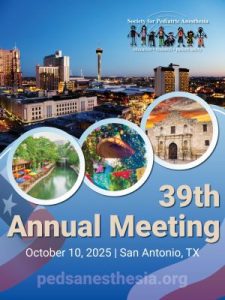{“questions”:{“ihgf9”:{“id”:”ihgf9″,”mediaType”:”image”,”answerType”:”text”,”imageCredit”:””,”image”:””,”imageId”:””,”video”:””,”imagePlaceholder”:””,”imagePlaceholderId”:””,”title”:”Which of the following MOST accurately describes a Level 5 ACGME Milestone score for a trainee? “,”desc”:””,”hint”:””,”answers”:{“6auyl”:{“id”:”6auyl”,”image”:””,”imageId”:””,”title”:”A. It is a necessary target value for graduation”},”plsi1″:{“id”:”plsi1″,”image”:””,”imageId”:””,”title”:”B. It permits independent unsupervised practice”},”o7qyp”:{“id”:”o7qyp”,”image”:””,”imageId”:””,”title”:”C. Is generally achieved during postgraduate fellowship training”},”jz68e”:{“id”:”jz68e”,”image”:””,”imageId”:””,”title”:”D. It is an aspirational score and unlikely for most trainees”,”isCorrect”:”1″}}}},”results”:{“h4gwv”:{“id”:”h4gwv”,”title”:””,”image”:””,”imageId”:””,”min”:”0″,”max”:”1″,”desc”:””,”redirect_url”:”https:\/\/pedsanesthesia.org\/wp-content\/uploads\/2021\/09\/Week-57-ACGME-Milestones.docx.pdf”}}}
Question of the Week #56
{“questions”:{“mgs7l”:{“id”:”mgs7l”,”mediaType”:”image”,”answerType”:”text”,”imageCredit”:””,”image”:””,”imageId”:””,”video”:””,”imagePlaceholder”:””,”imagePlaceholderId”:””,”title”:”A 3-year-old child arrives to the ER with a new cough, drooling, and excessive irritability. Per guardians, the patient was in her usual state of health until about 2 hours ago. Plain film radiograph reveals a 20 mm round object in the esophageal location. Ingestion of which of the following objects requires emergent endoscopy and removal? “,”desc”:””,”hint”:””,”answers”:{“jq99u”:{“id”:”jq99u”,”image”:””,”imageId”:””,”title”:”A.\tCoin”},”mwon9″:{“id”:”mwon9″,”image”:””,”imageId”:””,”title”:”B.\tButton battery”,”isCorrect”:”1″},”1qnuw”:{“id”:”1qnuw”,”image”:””,”imageId”:””,”title”:”C.\tOne magnet”},”0cyea”:{“id”:”0cyea”,”image”:””,”imageId”:””,”title”:”D.\tFidget spinner”}}}},”results”:{“fn6lk”:{“id”:”fn6lk”,”title”:””,”image”:””,”imageId”:””,”min”:”0″,”max”:”1″,”desc”:””,”redirect_url”:”https:\/\/pedsanesthesia.org\/wp-content\/uploads\/2021\/09\/Week-56-Esophageal-Foreign-Body.docx.pdf”}}}
Question of the Week #55
{“questions”:{“qz4sc”:{“id”:”qz4sc”,”mediaType”:”image”,”answerType”:”text”,”imageCredit”:””,”image”:””,”imageId”:””,”video”:””,”imagePlaceholder”:””,”imagePlaceholderId”:””,”title”:”You are called emergently to the recovery room to evaluate a 4-year-old boy who was recently extubated following a tonsillectomy and adenoidectomy (T&A) for severe obstructive sleep apnea (OSA). On examination, he has high-pitched inspiratory stridor and paradoxical chest movement. His vital signs are: SpO2 88% and HR 110. After administering 100% oxygen via face mask, which of the following is the MOST<\/em> appropriate next step in managing this patient?”,”desc”:””,”hint”:””,”answers”:{“qlxiv”:{“id”:”qlxiv”,”image”:””,”imageId”:””,”title”:”A.\tDirect laryngoscopy and endotracheal intubation.”},”t1fl8″:{“id”:”t1fl8″,”image”:””,”imageId”:””,”title”:”B.\tAdministration of propofol 1 mg\/kg IV.”},”p6t5t”:{“id”:”p6t5t”,”image”:””,”imageId”:””,”title”:”C.\tAdministration of succinylcholine 1 mg\/kg IV.”},”anw2o”:{“id”:”anw2o”,”image”:””,”imageId”:””,”title”:”D.\tJaw thrust and continuous positive airway pressure (CPAP).”,”isCorrect”:”1″}}}},”results”:{“rwu3b”:{“id”:”rwu3b”,”title”:””,”image”:””,”imageId”:””,”min”:”0″,”max”:”1″,”desc”:””,”redirect_url”:”https:\/\/pedsanesthesia.org\/wp-content\/uploads\/2021\/09\/Week-55-Adenotonsillectomy-PACU-Complications.docx.pdf”}}}
Question of the Week #54
{“questions”:{“bbdlp”:{“id”:”bbdlp”,”mediaType”:”image”,”answerType”:”text”,”imageCredit”:””,”image”:””,”imageId”:””,”video”:””,”imagePlaceholder”:””,”imagePlaceholderId”:””,”title”:”A 7-year-old with progressive Juvenile Dermatomyositis undergoing general anesthesia is MOST at risk for which of the following complications due to her myopathy? “,”desc”:””,”hint”:””,”answers”:{“t0ad4”:{“id”:”t0ad4″,”image”:””,”imageId”:””,”title”:”A.\tMalignant hyperthermia”},”2onlt”:{“id”:”2onlt”,”image”:””,”imageId”:””,”title”:”B.\tPulmonary aspiration”,”isCorrect”:”1″},”b40ow”:{“id”:”b40ow”,”image”:””,”imageId”:””,”title”:”C.\tResistance to non-depolarizing neuromuscular blockers”},”gwvv7″:{“id”:”gwvv7″,”image”:””,”imageId”:””,”title”:”D.\tPropofol infusion syndrome”}}}},”results”:{“hibaz”:{“id”:”hibaz”,”title”:””,”image”:””,”imageId”:””,”min”:”0″,”max”:”1″,”desc”:””,”redirect_url”:”https:\/\/pedsanesthesia.org\/wp-content\/uploads\/2021\/08\/Week-54-Acquired-Myopathies.pdf”}}}
Question of the Week #53
{“questions”:{“wsgyg”:{“id”:”wsgyg”,”mediaType”:”image”,”answerType”:”text”,”imageCredit”:””,”image”:””,”imageId”:””,”video”:””,”imagePlaceholder”:””,”imagePlaceholderId”:””,”title”:”A 7-year-old boy presents for an umbilical hernia repair. Past medical history includes epilepsy and a recent fungal infection for which he completed a course of ketoconazole. His parents request premedication to reduce separation anxiety. Oral midazolam is selected. Concomitant administration of which of the following will result in increased<\/em> midazolam metabolism?”,”desc”:””,”hint”:””,”answers”:{“l0ipz”:{“id”:”l0ipz”,”image”:””,”imageId”:””,”title”:”A.\tDiltiazem”},”583nw”:{“id”:”583nw”,”image”:””,”imageId”:””,”title”:”B.\tPhenytoin”,”isCorrect”:”1″},”qfwux”:{“id”:”qfwux”,”image”:””,”imageId”:””,”title”:”C.\tKetoconazole”},”o5m2z”:{“id”:”o5m2z”,”image”:””,”imageId”:””,”title”:”D.\tErythromycin”}}}},”results”:{“6h9be”:{“id”:”6h9be”,”title”:””,”image”:””,”imageId”:””,”min”:”0″,”max”:”1″,”desc”:””,”redirect_url”:”https:\/\/pedsanesthesia.org\/wp-content\/uploads\/2021\/09\/Week-53-Midazolam-CORRECTED.pdf”}}}
- « Previous Page
- 1
- …
- 41
- 42
- 43
- 44
- 45
- 46
- Next Page »
